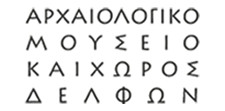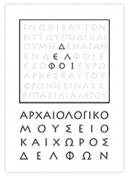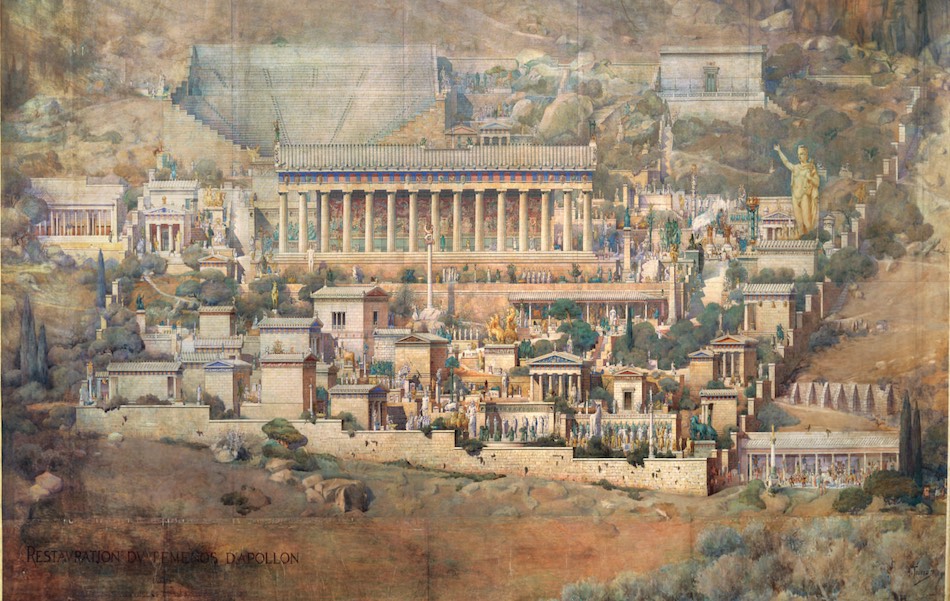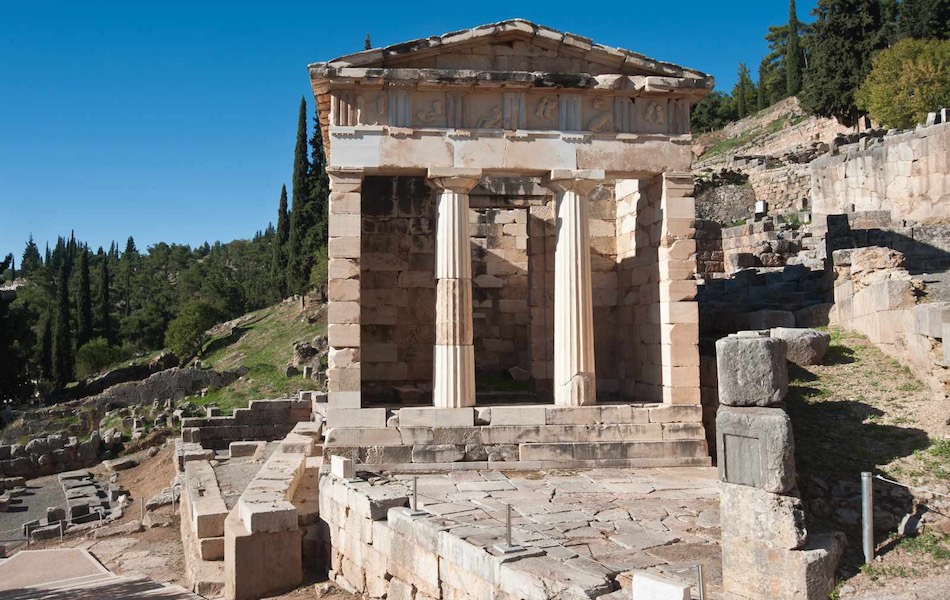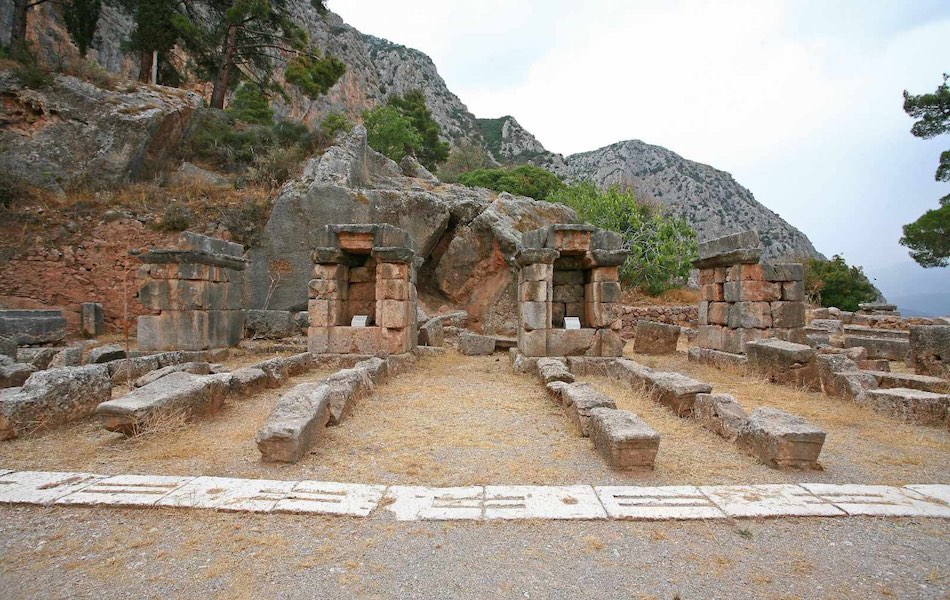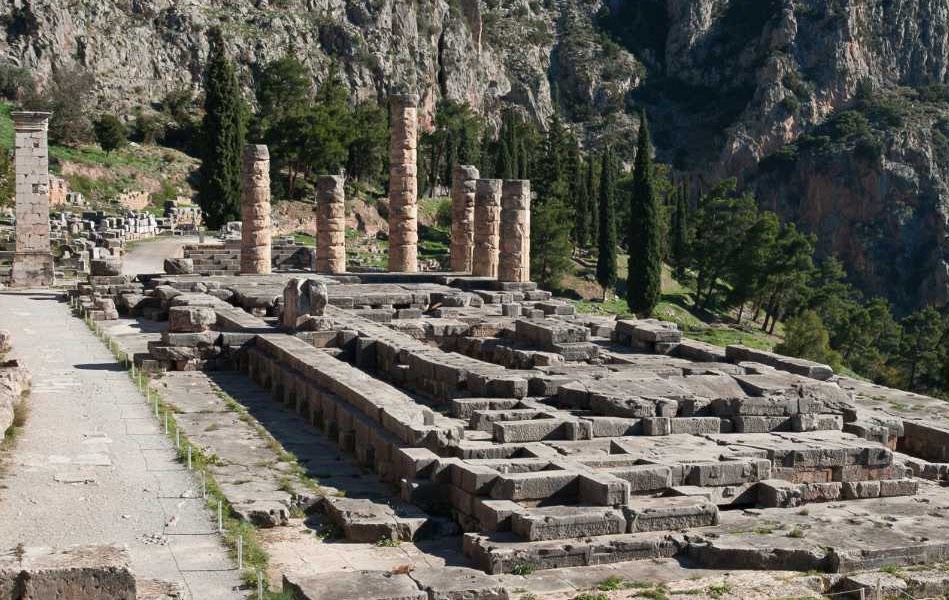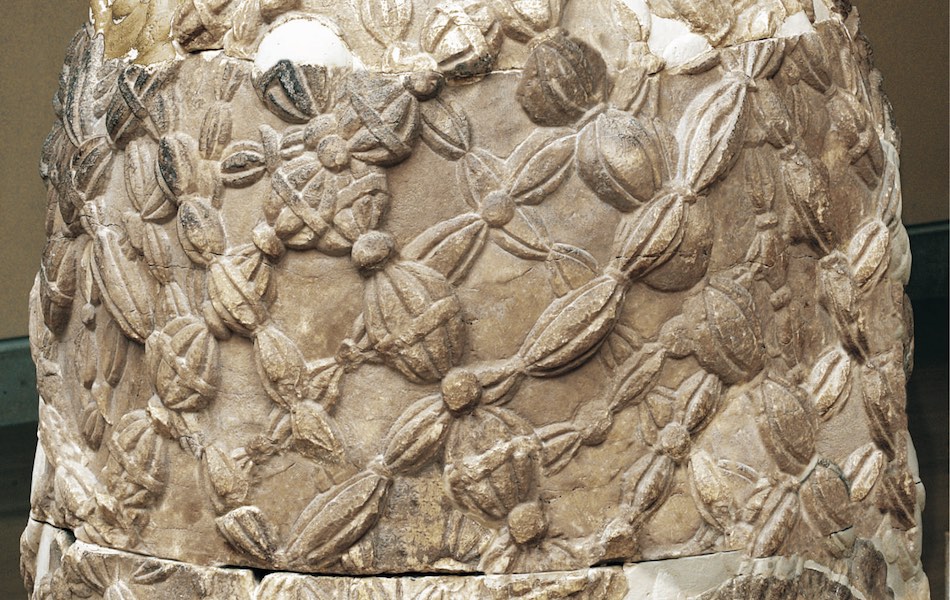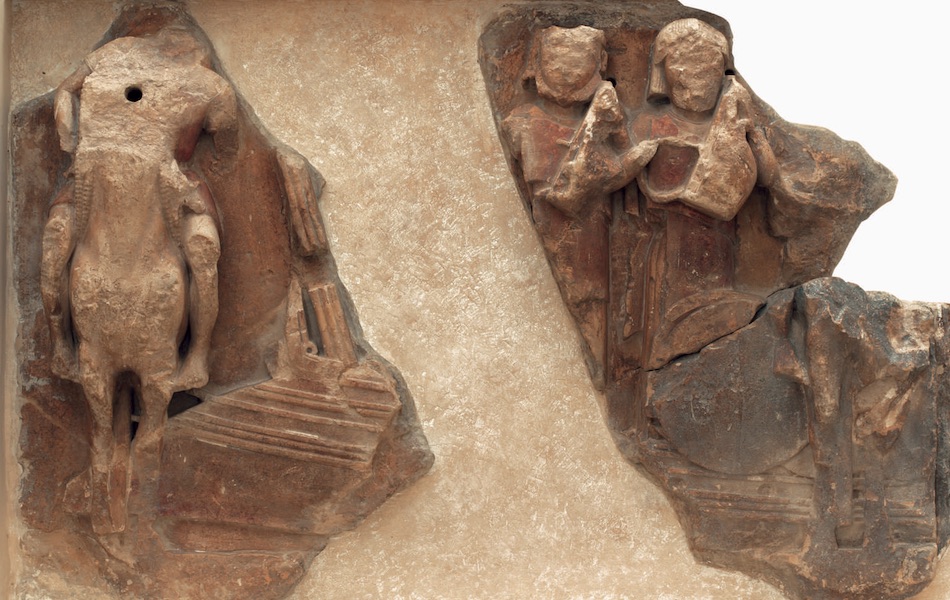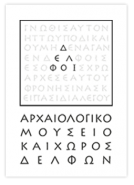Galaxeidi (Haleion)
Scholars identify Haleion, the ancient city of western Locris, with modern Galaxeidi. The area has been inhabited since the prehistoric period, with important finds already since the Early Helladic Period (Anemokambi, Pelekaris, Kefalari, islet Apsifia). A significant Mycenaean settlement has been located at the site Villa; a fortified Geometric settlement has also been discovered on the hill of St. Athanasios (ca. 700 B.C.). In the Archaic and Classical period (7th-4th centuries) the religious and administrative centre of the city developed at the modern site of Agios Vlasis. In ca 300 B.C. the present site was inhabited and the fortification wall was constructed under the auspices of the Aetolian League. Haleion continued to be inhabited and flourished until the 2nd century A.D. From that period onwards there is no significant mention of the city until the 10th century, when it was devastated by the Bulgarians in 981. In the medieval period, Haleion came under the rule of the Villheardouins of Patras and of the Ioannite Knights. In 1446 Galaxeidi came under Ottoman rule. However, Ottoman officers dwelled in the city only for a very brief period. In the major part of the Ottoman period the sole inhabitants were Orthodox Christians. The city flourished due to the development of maritime trade in the 18th century. The commercial exchanges with the west, particularly for the agicultural products of Corinthia and the Corinthian gulf in general triggered the development of a local commercial fleet, taking advantage also of the exquisite natural port of Galaxeidi. Particularly after the treaty of Kucuk Kainardji (1774), many of the ship owners of Galaxeidi functioned under Russian flag. Despite their privileged position, the inhabitants participated right away at the Greek War for Independence of 1821 and their city was destroyed twice by the Ottoman army, namely in 1821 and in 1825-6. It recovered, however, and in the course of the 19th century it thrived as a commercial and martime cente, a fact attested also by the spacious and luxurious houses of the traditional settlement.
In the Monastery of Sotir, on a hill just outside the city, was discovered in 1864 by Constantine Sathas the renowned “Chronicle of Galaxeidi”, written in 1703 by the monk Euthymios; it constituted the only source for the history of Phokis from the medieval period to the year of its composition.
ARCHAEOLOGICAL COLLECTION OF GALAXEIDI
The Archaeological Collection of Galaxeidi is sheltered in one of the halls of the Maritime and Historical Museum of the town and comes under the Ephorate of Antiquities of Phokis. The building was constructed shortly before 1870, in order to shelter the Girls’ School, the Town Hall and the Police department, and was used as such until 1979, whereas already since 1932 it sheltered the school of weaving and handcrafts. The collection was established in 1932 through donations by citizens and it then comprised excavation finds from the broader land and maritime regions of Galaxeidi.
The exhibition has been based on the finds and has been organised in three themes: (a) Private and daily life, (b) Trade and maritime activity and (c) Cemeteries. It is a mainly educational exhibition with plenty of pictures and texts, yet offering a very interesting view on the life of ancient Haleion, with which Galaxeidi is identified.
In the first case, to the left of the entrance, are preserved the ancient settlements in Dexameni, Kefalari, Apsifia and Anemokambi, situated around Galaxeidi, as well as the finds from the earliest habitation, dated to the Early Helladic period (3200-1900 B.C.). Among the exhibits stand out some obsidian blades and pottery sherds of the Early Helladic period from the islet Apsifia, as well as Mycenaean vessels (three-eared pithoid amphora, stirrup jar and pyxis) and Geometric vessels (wine jugs and skyphoi) from the cemetery of Agios Athanasios.
In the next case are exhibited finds from the city of Galaxeidi itself. The city wall, evident in many areas of the town and dating to the period of the Aetolian League (beginning of the 3rd century B.C.) delimited the settlement and made it one of the most protected ports of the Corinthian gulf. From the intra muros settlement very few things are preserved, yet we learn a lot about the life in the city by the cemetery which has been excavated in Heroon Square as well as through the grave goods of particular tombs.
Among the finds stands out a black glazed kantharos, two lagynoi, a red glazed cup, a tiny lekythos with upright handle, some spindle-shaped unguentaria and terracotta lamps dated to the Hellenisti and Roman period.
In a case on the NW wall are displayed vessels and finds related to the daily life of the inhabitants. Among the most ancient ones are listed two cotylae with angular handles dated to the 7th century B.C. There are also some skyphoi, an amphorisc, globular aruballoi and cylindrical pyxides of Corinthian workshops, mainly dated to the 6th century B.C. The attic vessels comprise black figured cylixes and lekythoi of the end of the 6th-beginning of the 5th century B.C., as well as two black glazed kanthars and a single handled cup of the last quarter of the 5th century B.C.
Particularly interesting is the red-figured pelike with the representation of a man wearing the himation (tunic), supported by a stick and talking to a young man, also wearing the himation (2nd quarter of the 5th century B.C.).
Among the rest of the Hellenistic pottery vessels in the next case are discerned spindle-shaped and bulb-shaped unguentaria, lagynoi, amphorae and a cookpot. On the lower shelf are displayed also several oil lamps of the Hellenistic and Roman period, among which stands out one with two holes for the wick, the handle of which has the form of an anthemion.
Seven vessels made of blown glass (cups, amphorisc, unguentaria) represent the glassmaking of the 1st century A.D. Among them stands out a moulded cup, bearing the inscription “Be happy in everthing that you participate at”, which is a goading to the diners to enjoy the dinner.
From the woman’s world are displayed mainly beauty items, such as the two bronze mirrors. One is a simple disc and it must have been supported by a wooden handle, whereas the second one is folding, bearing a cover decorated with a female head and was probably made in a Corinthian workshop (end of the 4th century B.C.). Furthermore, one sees some bronze jewellery of the Geometric period (9th-8th century B.C.), such as hair clips, two 8-shaped spial brooches and a belt ending up in spires. Finally, a pendant in the fom of a head of Ammon Zeus probably dates to the Roman period. Pins and needles made of bone connect the care for one’s attire with clothing. Household weaving, after all, was one of the basic women’s activities, as attested by numerous clay loomweights at the end of the case, one of which bears the name “Agesiou”.
The case opposite to the entrance comprises clay figurines and metal vessels and tools. The clay figurines comes from the site Akona or Ankona on the foothill of the mountain Xerotyri, where a female deity was worshipped. The are mainly busts, seated figures and standing figures with a tall headcver holding a bird in her chest. There is also a cut around tile depicting a sphinx, birds and seated rams. The finds comprise also loomweights, astragaloi and miniature vessels, dated to the late Archaic and Classical period.
More than 100 bronze vessels and utensils from Galaxeidi are found scattered in 15 museums in America and Europe. They have all been illegally excavated and traded in the second half to the 19th century. This was attested by the discovery, in 1973, of a peculiar lekythos with bell-shaped body and a tall handle, similar to two more lekythoi of the British Museum and one in Edimburgh which bear the indication “Galaxeidi”. This type is unknown from anywhere else. This particular vessel is juxtaposed, in the case, with another one, blacck glazed, possiby from a Corinthian workshop. In the same case is displayed also a 7th century cauldron of the 7th centuy B.C., a wine jug of the 5th century B.C, as well as a pyxis and an ink bottle, all bronze items from the region of Agios Vlasis.
In a case in the corner is displayed a quasi-globular amphora of the Late Early Helladic II period
(2400-2200 B.C.) from Anemokambi, covered entirely with shells’ residues, as it was found in the sea. In a lower case are displayed obsidian blades and kernels from Melos and vessels from Corinth and Athens which attest to the spectrum of trade exchanges in this region. In a compartment with sand on the floor have been placed seven commercial amphoras for transportation of wine, dated in various periods and coming from different regions (Corinth, Corfu, Cnidus, Hellensitic of the 1st century B.C., Aegean type of the 5th-6th century A.D).
At the end of the hall is the cemeteries entity, with finds from Agios Athanasios (Geometric period) and from the town of Galaxeidi itself (Classical-Roman period). Part of a marble statue and a funerary relief of the Roman period are still displayed as well as three inscribed funerary stele, two with a pediment and rosettes. One more stele with anthemia is located in the reception. They all date between the 3rd and the 1st century B.C.
Geometric pottery comprises mainly skyphoi and wine jugs fom Corinth, as well as some unglazed vessels, wherea the pottery of the Classical period comprises Attic black figured lekythoi, a red-figured little lekythos, two black glazed wine jugs with trefold mouths and a pyxis, as well as bell-shaped painted Corinthian lekythoi, black glazed skyphoi, cotylae and a lekythos. The Hellenistic pottery comprises lagynoi in various types, Corinthian kantharoi, miniatue lekythoi, spindle-shaped unguentaria and several oil lamps. In the Roman period common types are the bulb-shaped unguentaria, usually made of pottery or glass, some amphiconic wine jugs of grey pottery, some red painted vessels as well as oil lamps with depictions in relief. Among them stands out one with the pattern of a gladiator, another one with a cupid and a third one with the depiction of a female figure, holding torches and bearing a crescent on the head, possibly an incarnation of the Night.
MUSEUM OF DELPHI
